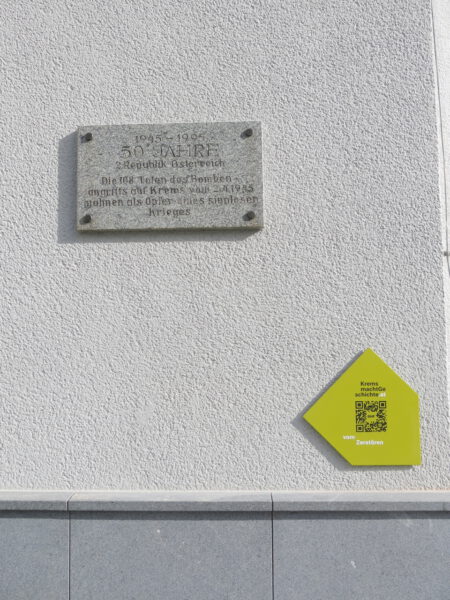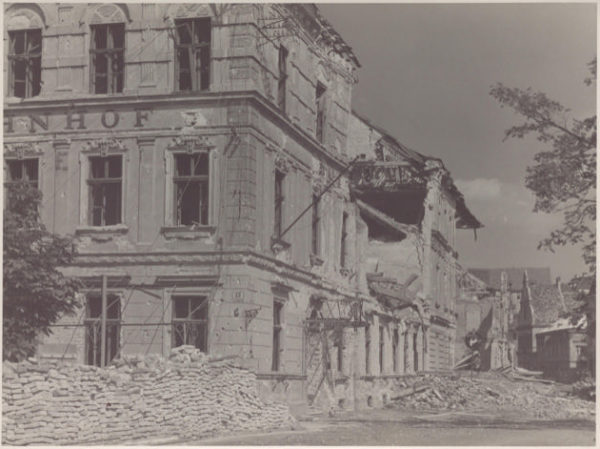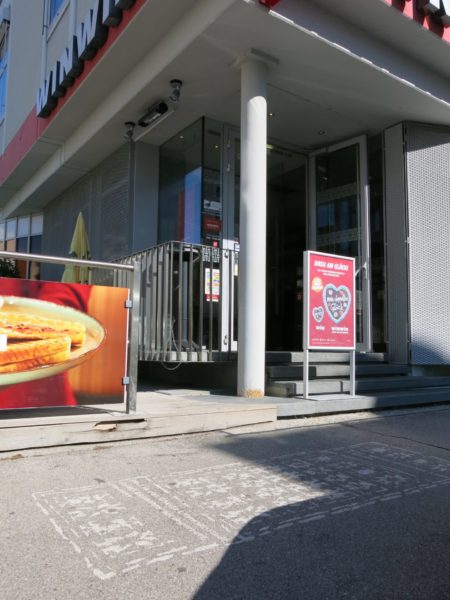The synagogue in Krems was consecrated in 1894. Designed by the Viennese architect Max Fleischer, the building combined the style of neo-Gothic churches with that of Renaissance townhouses and was particularly notable for its monumental three-level facade gable. At the time it was built, around 300 Jewish people were living in Krems.
After the “Anschluss” in 1938, the Jewish Community of Vienna (IKG) was forced to hand over the synagogue to the Nazi city administration. When the temple was “cleared” in September 1938, the Jewish people of Krems had to take part in a humiliating antisemitic spectacle. With numerous onlookers present, they were forced to play “hopscotch” with furniture and religious objects, all while being subjected to physical assaults.
The building survived the November Pogrom, cynically dubbed “the night of broken glass” by the Nazis, of 1938 because SA and SS units were afraid an arson attack might cause fire to spread to neighbouring buildings. Instead, these units took part in the destruction of the synagogue in St. Pölten. A bombing raid on Krems in April 1945 destroyed the railway station and the whole of the Bahnofstraße up to the synagogue, but the building itself remained largely undamaged.
In 1952 the Jewish Community of Vienna successfully reclaimed ownership of the synagogue. Just under twenty years later the organisation sold the land to the food cooperative Konsum and the bakery St. Pöltner Dampfbäckerei. The new owners had the synagogue demolished in 1978. Today there is a betting shop where it once stood.




